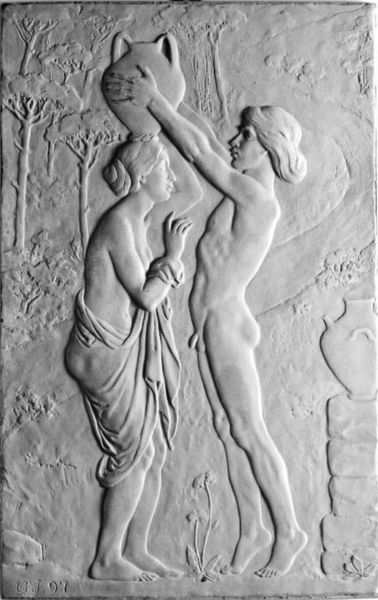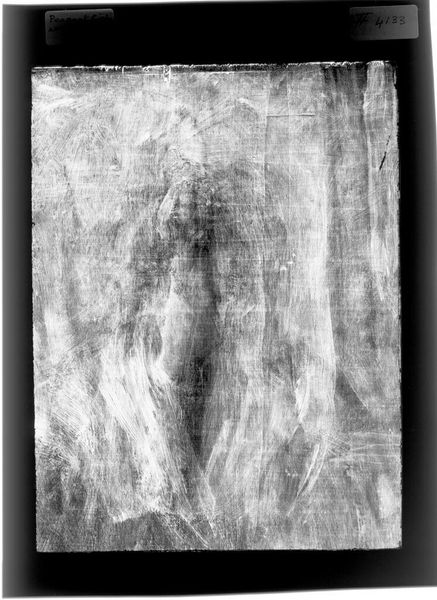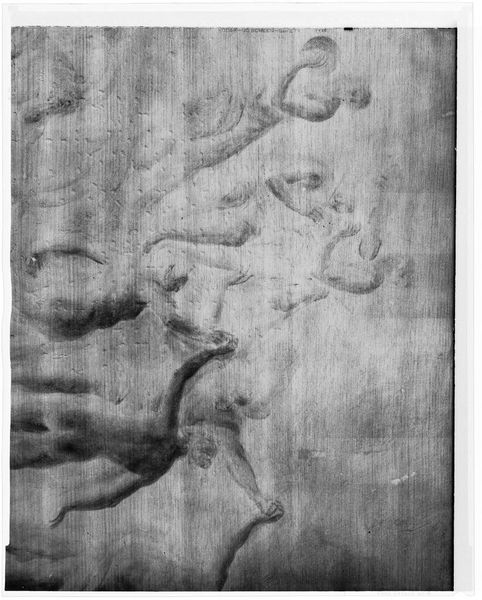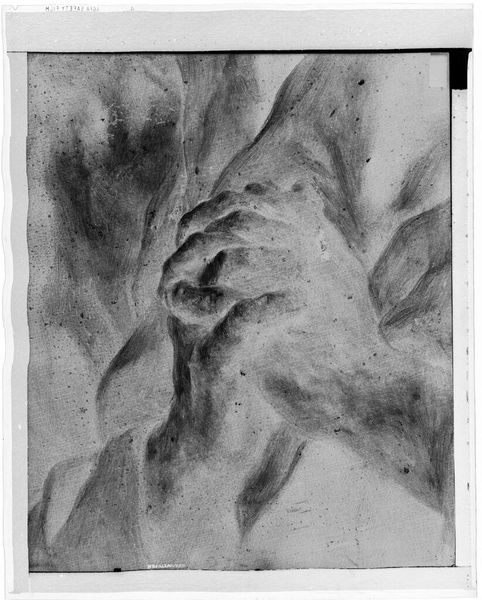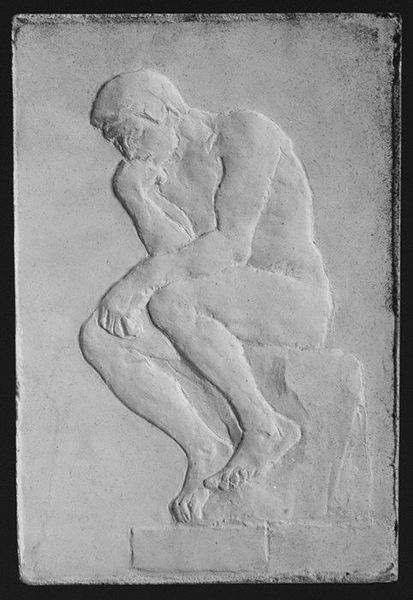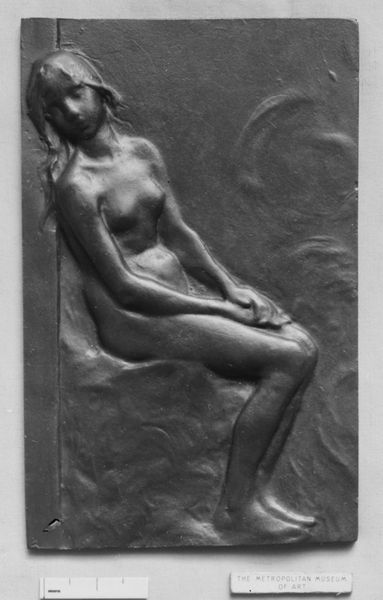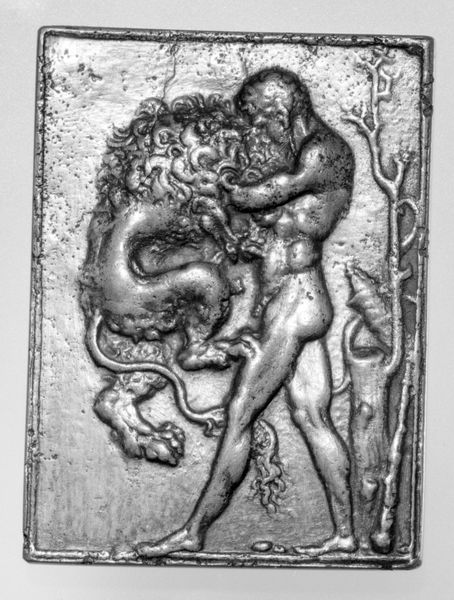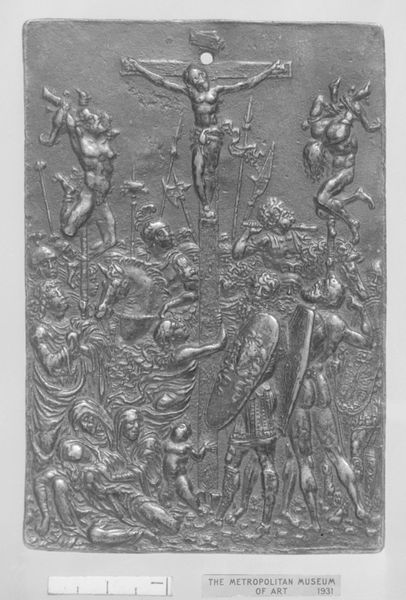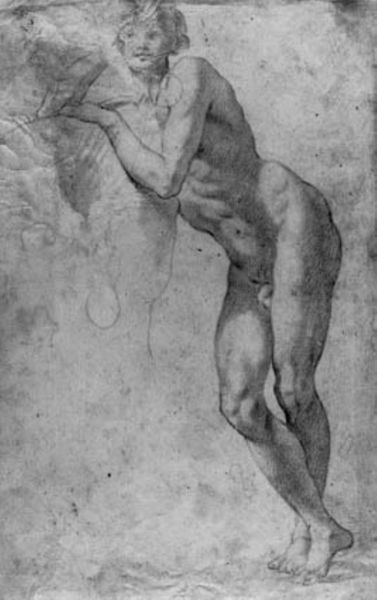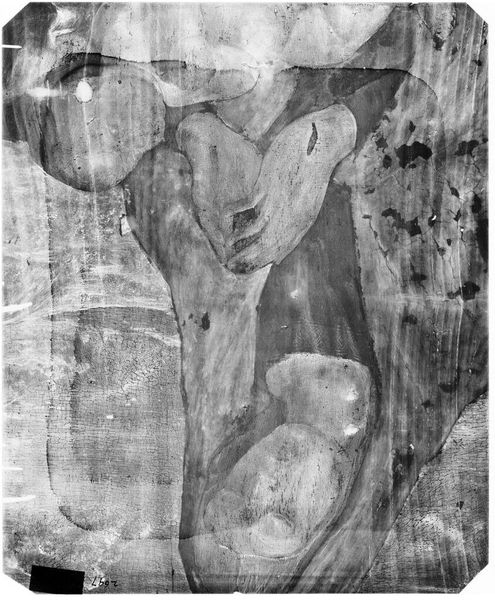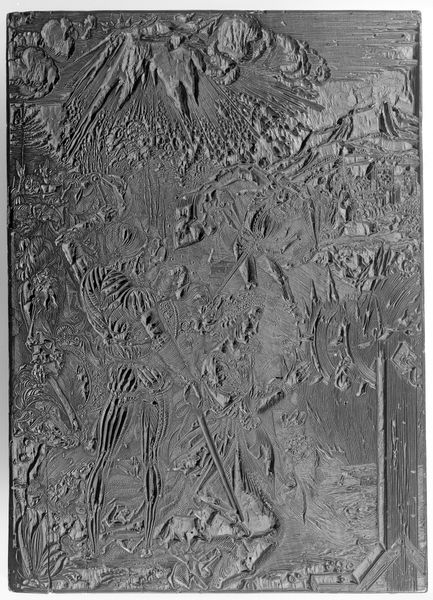
relief, sculpture
#
relief
#
figuration
#
sculpture
#
monochrome photography
#
symbolism
#
history-painting
#
monochrome
#
decorative-art
#
nude
#
monochrome
Dimensions: 12 9/16 x 8 3/16 in. (3.19 x 2.08 cm)
Copyright: Public Domain
Curator: Alexandre-Louis-Marie Charpentier’s relief sculpture, "A Vision of Victory", created between 1885 and 1899. Editor: There’s something incredibly melancholic about this winged figure emerging from what looks like clouds. Despite the title, "Victory", the monochrome palette subdues any sense of triumph, at least upon first glance. Curator: Precisely, that limited palette, a stark, uniform surface, allows us to focus on the superb modelling, the textures created to define the figure and the swirling dynamism of the background elements, stars and those enigmatic clouds. It’s not simply celebratory; rather, it invites contemplation through Symbolist aesthetics and decorative impulses. Editor: Symbolism's obsession with inner states, dreams and death permeates every visual component. And of course, the figure’s nudity. Are we to read the exposed form in conjunction with the Symbolist nude as challenging bourgeoise concepts of privacy and the role of the public body? How complicit or transgressive could such portrayals of idealized female forms become during periods of nationalist fervor? Curator: I would propose we investigate not merely symbolic undercurrents relating to a gendered body but also this bas-relief itself as object. Observe how Charpentier has subtly manipulated the play of light and shadow, rendering it not as mere representation, but as a fully formed autonomous construction with its own material language. The texture, that sense of depth given to the surface, provides unique perspective in viewing and decoding the symbolic image. Editor: That materiality seems deliberate – to take on universal and potentially nationalist interpretations of woman. Consider that victory here is not simply about territory. The work presents as more complex statements regarding how artists are envisioning modern woman at a political crossroads: how this feminine ideal intersects with historical, cultural, and socio-economic systems of value, and that’s not simply confined to form, texture, or tonality. Curator: A pertinent analysis, if I may say so. The enduring potency of "A Vision of Victory" comes not solely from aesthetic elements, but in the interplay between pure formal assessment and your well-argued interpretations. Editor: Hopefully, our analysis offered our listeners different yet equally valuable perspectives on Charpentier’s relief.
Comments
No comments
Be the first to comment and join the conversation on the ultimate creative platform.
